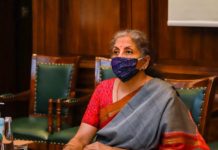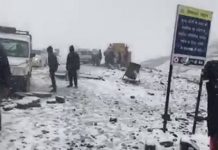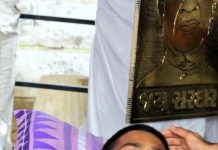
Vicky Roy would rather we not talk about his uplifting life story. “I’ve stopped talking about my personal life,” he says. “I’d rather talk about my work.” There’s as much fatigue as there is modesty in that decision; it’s a story he’s told at various events. It’s also the basis of his first monograph, Home. Street. Home., the first of a series of books being brought out by the Nazar Foundation to bring greater attention to young photographers.
In 1999, Roy, then 11, ran away from home in Purulia, West Bengal, and took the first available train to Delhi. He had been taken in by his grandfather, as his parents couldn’t afford to raise him, and was tired of the endless chores he was being made to do. More importantly, he wanted to see the world. Once in Delhi, he lived on the platform, collecting empty water bottles, filling them with cold water and selling them to general class passengers. Eventually, he was taken in by the Salaam Baalak Trust, who gave him an education. They also exposed him to photography, first by letting him tag along with British photographer Dixie Benjamin as he documented the trust’s activities, then by getting him an apprenticeship with Anay Mann.

Vicky Roy
Nazar Foundation
97 pp; Rs 1,000
Home. Street. Home. is a frank acknowledgement of his roots, a thank you note to the people and institutions who contributed to making him an international success (he was one of the four photographers chosen after an international competition to document the reconstruction of the World Trade Centre). The photos are largely drawn from two collections, Street Dreams and Apna Ghar, where he followed children living on Delhi’s streets and in the home he grew up in. With sensitivity and empathy, he charts the course these children are taking, a course he himself took, one from survival to choice. He captures the hope these children feel “once they are taken in by society, given a support structure to chase their dreams”.
ajachi@tehelka.com












